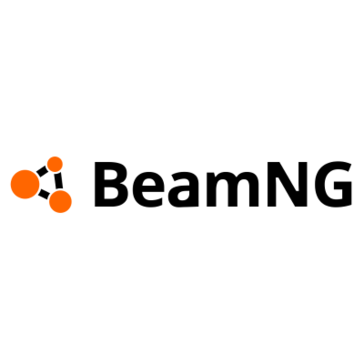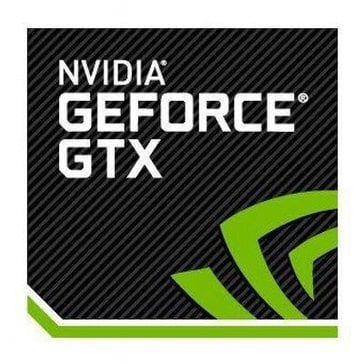Description

BeamNG

Havok
Comprehensive Overview: BeamNG vs Havok
BeamNG and Havok are both prominent technologies in the realm of physics simulation, but they cater to different markets and offer distinct functionalities. Below is a comprehensive overview of both:
BeamNG
a) Primary Functions and Target Markets
- Primary Functions: BeamNG is primarily known for its soft-body physics simulation, which provides a highly realistic depiction of vehicle dynamics and destruction. It allows each part of a vehicle to behave independently, which results in an unprecedented level of detail during crashes or any kind of structural deformation.
- Target Markets: Initially focused on video game applications, BeamNG is widely used by game developers and hobbyists. However, its realistic simulation capabilities have also found applications in the fields of automotive safety research and virtual prototyping.
b) Market Share and User Base
- Market Share: BeamNG has a niche market, primarily within the automotive simulation and gaming communities. It holds a significant position for enthusiasts interested in detailed vehicle physics and crash simulation. However, it is not as widely adopted in general game development as some other physics engines.
- User Base: Its user base includes gamers, simulation enthusiasts, modders, and researchers. BeamNG.tech, a professional-grade version of the platform, is used by automotive companies and researchers for more advanced simulation needs.
c) Key Differentiating Factors
- Realism: BeamNG's most notable feature is its unparalleled realism in simulating vehicle physics, which makes it stand out for applications requiring detailed collision and deformation analysis.
- Modding Community: BeamNG has a vibrant modding community that contributes a wide range of user-generated content, enhancing its versatility and application scope.
- Focus: While BeamNG has diversified into professional simulations, its core appeal remains grounded in the gaming and enthusiast domain.
Havok
a) Primary Functions and Target Markets
- Primary Functions: Havok is a comprehensive suite for real-time physics, AI, animation, and special effects, widely used in the video game industry. It covers various aspects, from collision detection and rigid body dynamics to advanced character animation.
- Target Markets: Havok's primary market is the video game industry, but its applications extend into film production, virtual reality, and military simulations. It is used by major game studios for creating complex and realistic virtual environments.
b) Market Share and User Base
- Market Share: Havok is one of the most widely used physics engines in the game industry, with a substantial market share. It has been utilized in a multitude of AAA game titles, making it a dominant force in this sector.
- User Base: The user base consists largely of professional game developers, film creators, and organizations looking for high-fidelity simulations in virtual worlds.
c) Key Differentiating Factors
- Integration: Havok offers seamless integration with various platforms and other middleware, making it a versatile choice for large projects needing more than just physics simulation.
- Comprehensive Suite: Unlike BeamNG, Havok provides an entire suite of tools for different simulation needs beyond just physics, such as animation and AI.
- Industry Presence: Havok has a strong foothold in the professional entertainment industry, supported by a solid reputation based on reliability and extensive support for complex projects.
Comparison and Conclusions
BeamNG and Havok both excel in physics simulation but cater to different aspects and markets of this broad field. BeamNG's strength lies in its realistic vehicle simulations, appealing primarily to niche markets like enthusiasts and automotive researchers. In contrast, Havok, with its broader suite of tools and industry presence, caters extensively to professional video game and film producers. Their market shares reflect these differences, with Havok capturing a larger, more established user base, while BeamNG focuses on its specialization in soft-body dynamics.
Contact Info

Year founded :
Not Available
+49 42 140894390
Not Available
Not Available
Not Available

Year founded :
1998
+353 1 472 4300
Not Available
Ireland
http://www.linkedin.com/company/havok
Feature Similarity Breakdown: BeamNG, Havok
BeamNG.drive and Havok both stand out in the realm of physics simulation, but they serve somewhat different purposes. Here's a breakdown of their similarities and differences:
a) Core Features in Common
-
Physics Simulation:
- Both BeamNG and Havok are renowned for their physics engines. BeamNG is known for its realistic soft-body physics, while Havok provides a comprehensive set of rigid-body physics features.
-
Real-Time Simulation:
- Both offer real-time simulation capabilities, which are crucial for interactive applications like video games.
-
Collisions and Destruction:
- They both support dynamic collision modeling and destruction, although BeamNG's differentiation lies in its soft-body damage modeling, while Havok focuses on realistic rigid-body interactions.
-
Cross-Platform Support:
- Both can be integrated across various platforms, including PC and consoles, for games and simulations.
-
Development Tools:
- Each provides developers with tools for adding physics-based interactions into environments, although the specifics of toolsets might differ.
b) User Interface Comparison
-
BeamNG.drive:
- Primarily a game with a graphical user interface geared towards driving simulation enthusiasts. Its interface is designed for end-users more than developers, featuring intuitive controls for interacting with the simulation.
-
Havok:
- Primarily a middleware solution integrated into game engines. It lacks a standalone graphical user interface, as it is accessed through other software like Unity or Unreal Engine. Developers interact with Havok through these engines' development interfaces rather than a separate application.
c) Unique Features
-
BeamNG.drive:
- Soft-Body Dynamics: BeamNG is unique in its emphasis on soft-body physics, allowing for complex deformation and realistic vehicle damage.
- Modding Support: The community-driven mod support in BeamNG allows users to create and share their vehicles, maps, and gameplay scenarios.
- Driving Simulation: As a driving simulation game, it offers a broad array of vehicles and environments, focusing on realistic driving mechanics.
-
Havok:
- Integration with Other Tools: Havok is often bundled with a suite of tools like Havok AI, Havok Cloth, and Havok Destruction, providing a more all-encompassing physics solution for game development.
- Professional Middleware: Widely used in professional game development for high-fidelity rigid-body physics and optimized performance, including large-scale collision detection and constraints.
Conclusion
While both BeamNG and Havok share common ground in physics simulation, BeamNG is aimed more towards consumer enjoyment through immersive simulations, whereas Havok serves as a backend tool for developers within larger game engines. Their interfaces and unique features highlight their differing primary use cases – BeamNG as a stand-alone simulation application and Havok as part of a development toolkit for creating interactive media.
Features

Not Available

Not Available
Best Fit Use Cases: BeamNG, Havok
BeamNG and Havok are both physics engines used in various simulations and game development projects, each with its own strengths and best-fit use cases. Let’s explore where each of these tools excels:
BeamNG
a) Use Cases for BeamNG:
BeamNG is renowned for its highly realistic soft-body physics engine, making it an excellent choice for projects where detailed vehicle dynamics and realistic physical behaviors are critical. Some specific use cases include:
-
Automotive Industry:
- Vehicle Simulation: Automotive companies use BeamNG for simulating real-world vehicle dynamics, crash testing, and training purposes. Its ability to realistically depict car behavior in various scenarios provides valuable insights during vehicle development.
- Training Simulators: Companies creating driving simulators for educational purposes can leverage BeamNG’s realistic physics to develop highly immersive training experiences.
-
Game Development:
- Driving and Racing Games: Indie developers and game studios targeting ultra-realistic driving experiences often choose BeamNG for its unparalleled physics accuracy.
- Open World Games: For projects requiring detailed environmental interaction, BeamNG’s physics engine can provide depth and immersion.
-
Research:
- Academic Projects: Universities and research institutions may use BeamNG for simulating and studying complex physical interactions or developing AI-based control systems for autonomous vehicles.
Havok
b) Preferred Use Cases for Havok:
Havok is a versatile and comprehensive physics engine widely used across various platforms, known for its robustness and optimization capabilities. It is suitable for:
-
Video Game Industry:
- AAA Game Development: Havok is extensively used in large-scale games where performance and cross-platform deployment are critical. It supports complex physical interactions and integrates well into different game engines like Unity and Unreal Engine.
- Virtual Reality (VR) and Augmented Reality (AR) Games: The need for highly optimized physics calculations is crucial in VR and AR as they strive for both realism and frame rate performance.
-
Film and Animation:
- Visual Effects: Studios creating high-quality visual effects for films often rely on Havok’s physics to simulate realistic explosions, debris, and dynamic environments.
-
General Software Development:
- Simulation Tools: For enterprises developing various simulation tools across industries (e.g., architecture, engineering), Havok provides a reliable physics engine that can be customized to fit specific needs.
Catering to Industry Verticals and Company Sizes:
-
Industry Verticals:
- BeamNG caters mainly to niche markets focusing on vehicular dynamics and realistic soft-body physics simulations. It's suited for projects that need accuracy at the expense of some performance optimization.
- Havok, on the other hand, serves a broader range of industries including gaming, entertainment, and software development, offering solutions that balance realism with performance.
-
Company Sizes:
- BeamNG is often a good fit for smaller indie teams and educational institutions due to its focused application and specialized nature. It might not require as large a development team given its specific utility in vehicle simulation.
- Havok is better aligned with larger companies or projects that demand comprehensive physics simulations across various applications, benefiting from its scalability and integration support. It is more suitable for enterprises that can afford its licensing and need diversified physics applications.
In summary, BeamNG shines in sectors demanding high fidelity in vehicular simulation, while Havok is a versatile choice for developers needing broad, optimized physics engines applicable to diverse projects, especially in gaming and visual media production.
Pricing

Pricing Not Available

Pricing Not Available
Metrics History
Metrics History
Comparing undefined across companies
Conclusion & Final Verdict: BeamNG vs Havok
Conclusion and Final Verdict for BeamNG vs Havok
a) Considering all factors, which product offers the best overall value?
When evaluating the overall value of BeamNG and Havok, it depends largely on the use case as both offer distinct advantages tailored to different needs.
BeamNG provides exceptional value for users focused on high-fidelity, real-time soft-body physics simulations—especially in automotive simulations and video games that prioritize realistic vehicle dynamics. Its value is best realized in contexts where visual realism and physics accuracy are paramount.
Havok, on the other hand, excels as a comprehensive physics engine that supports a wide range of simulations with robust performance and scalability. It offers better integration with industry-standard game engines and a wider feature set for broader applications beyond just vehicles, making it particularly valuable for game developers seeking a versatile solution.
b) What are the pros and cons of choosing each of these products?
BeamNG:
-
Pros:
- Realistic soft-body physics simulation suitable for detailed vehicle dynamics.
- Highly customizable and allows for accurate real-world driving environments.
- Ideal for automotive industry applications and simulation enthusiasts.
-
Cons:
- Limited to niches that require soft-body physics; not as versatile for general game development.
- Can be resource-intensive, requiring higher computational power.
- Smaller community and fewer integrations compared to larger engines like Havok.
Havok:
-
Pros:
- Widely adopted in the gaming industry, known for its robust performance.
- Comprehensive range of physics functionalities including ragdoll physics, destruction, and cloth simulation.
- Good scalability and integration options with major game engines like Unity and Unreal Engine.
-
Cons:
- Subscription and integration costs can be high, especially for small developers or niche projects.
- Steeper learning curve due to its extensive feature set.
- Might offer more than needed for projects focusing exclusively on vehicle simulation.
c) Specific Recommendations for Users Trying to Decide Between BeamNG vs Havok
-
For Automotive Simulations and Realistic Vehicle Dynamics: If your primary focus is on simulating realistic vehicle behavior, particularly if you are developing a driving simulator or a game with a strong emphasis on vehicle physics, BeamNG's soft-body physics engine is likely the better choice. It does an exceptional job at creating detailed and life-like simulations of complex mechanical systems.
-
For General Game Development and Applications Requiring Multiple Physics Solutions: If your project requires a versatile physics engine capable of handling various types of simulations (such as character animation, environmental physics, and destructible objects), Havok stands out for its performance and flexibility. Its integration with popular game engines and wide industry adoption make it suitable for a range of interactive applications.
-
Budget Considerations: Evaluate your budget and long-term goals. Smaller teams or those with limited resources may find BeamNG to be more affordable, but for larger projects necessitating a broad feature set, the investment in Havok may be justified.
Ultimately, choosing between BeamNG and Havok should be based on your specific project requirements, budget, and the level of desired realism in physics simulation. Consider what is most critical to your application's success: the niche strength of BeamNG in vehicle physics or the all-around capabilities of Havok.
Add to compare
Add similar companies



